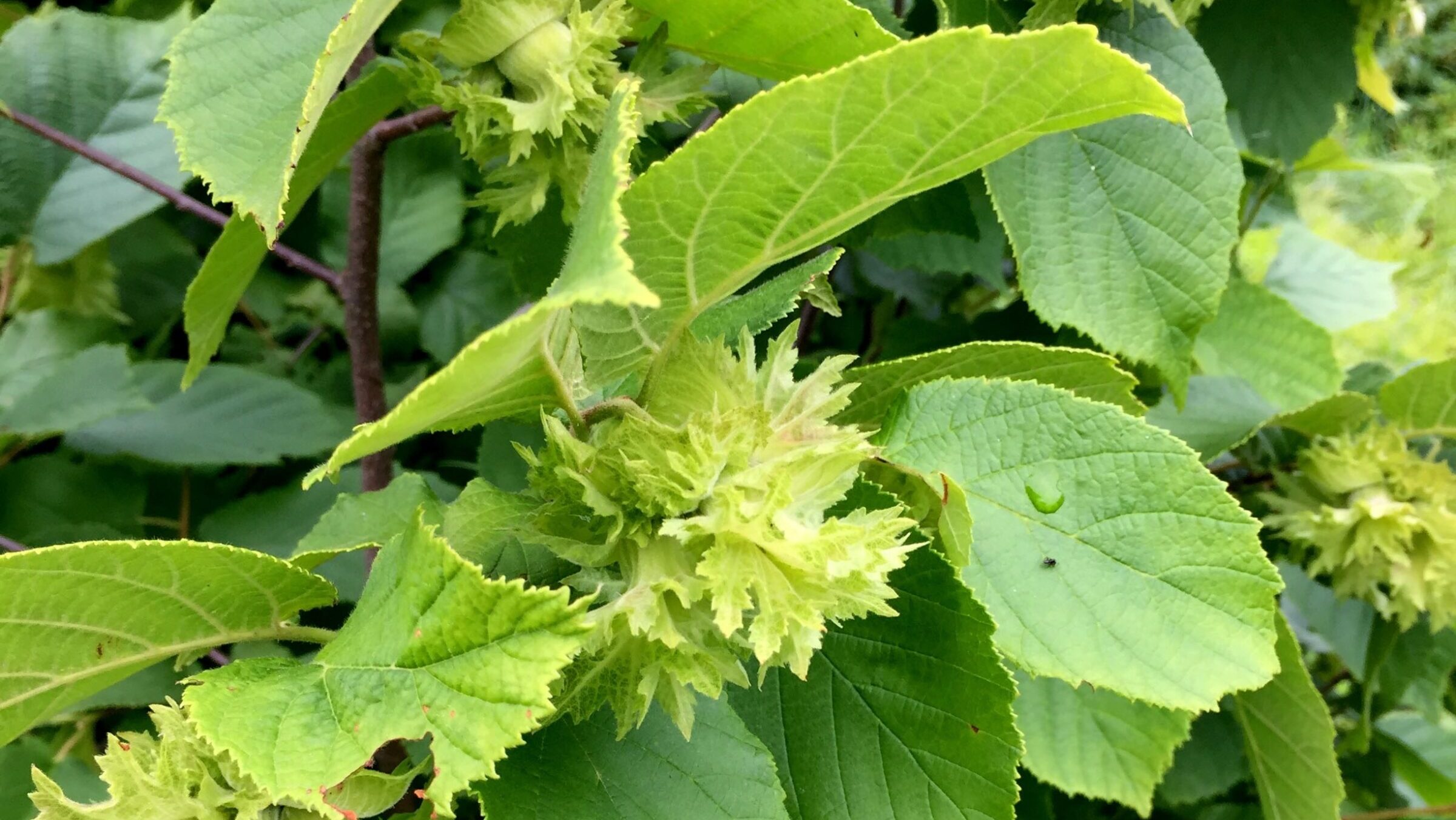
1. Let’s Go!
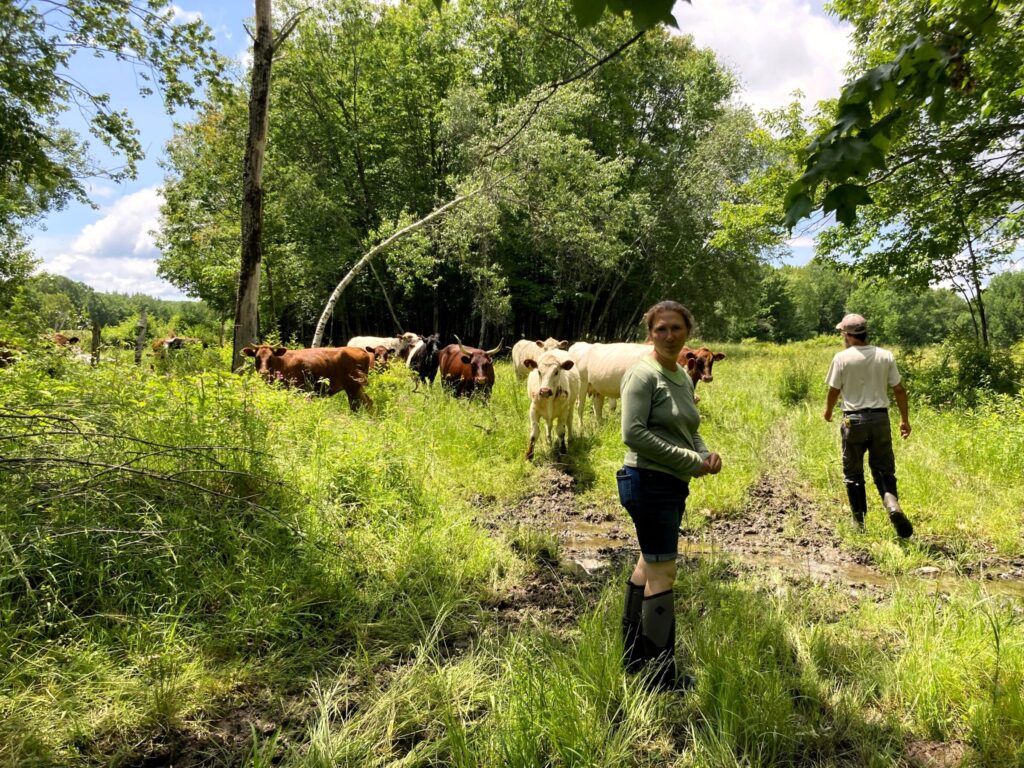
Is agroforestry a good fit for my farm? What can we grow on our site? How long will it take to start selling products? Where do we put the trees?
This series takes you step-by-step — from assessing site suitability & designing your layout, to correctly planting and caring for your perennial crops in our Northeast climate. Get organized, get inspired, and get connected in the exciting world of agroforestry!
These articles are the product of a collaboration between Regenerative Design Group (RDG) and NOFA/Mass, funded by a USDA Specialty Crop Block Grant. The three-year project, Expanding Agroforestry in Massachusetts (2022-2025) included support for a peer-to-peer cohort of beginning and existing agroforestry farmers in Massachusetts, new materials for consumer education, and this guide to kickstarting temperate agroforestry implementation at any scale.
What is Agroforestry?
Agroforestry is the intentional integration of trees on farms to support people, livestock, and wildlife. Agroforestry has been practiced for thousands of years by indigenous peoples who observed natural ecosystems and understood that growing useful perennial and annual plants (and fungi) together with wildlife and domesticated livestock created a system where each species benefited the others. Practices are wide-ranging and are generally applied for commercial production and profitability. The USDA recognizes at least five types of agroforestry systems, although agroforestry practices are numerous, and many systems encompass multiple practices used in traditional rural and indigenous land management.
- Riparian Buffer: A productive strip of trees and shrubs planted along stream and river banks to reduce shoreline erosion, absorb excess nutrient runoff, and filter harmful pathogens from improper manure storage.
- Silvopasture: The addition of shade, fodder, or biomass-producing trees to open pasture or the careful thinning of woodlots to provide forage and shelter for livestock.
- Forest Farming: Growing commercial food or medicinal crops in partial shade or under the full forest canopy.
- Alley Cropping: Widely-spaced rows of trees between blocks of annual row crops planted to minimize erosion, increase water infiltration, and add biological diversity to the soil.
- Windbreak/Shelterbelt: Blocks of trees or a perimeter planting that reduces wind damage and soil erosion and creates favorable microclimates for livestock.
Why Consider Agroforestry?
Farmers and landowners are increasingly turning to agroforestry systems for their potential to provide multiple benefits such as diversification, ecosystem health, soil building, livestock health and added farm profitability and resilience. Conventional annual row cropping and tillage-based agriculture have resulted in the damage and the loss of soil and water resources. Agroforestry systems can help stem and reverse these losses, returning viability to farms and adapting agriculture to the effects of climate change across the globe.
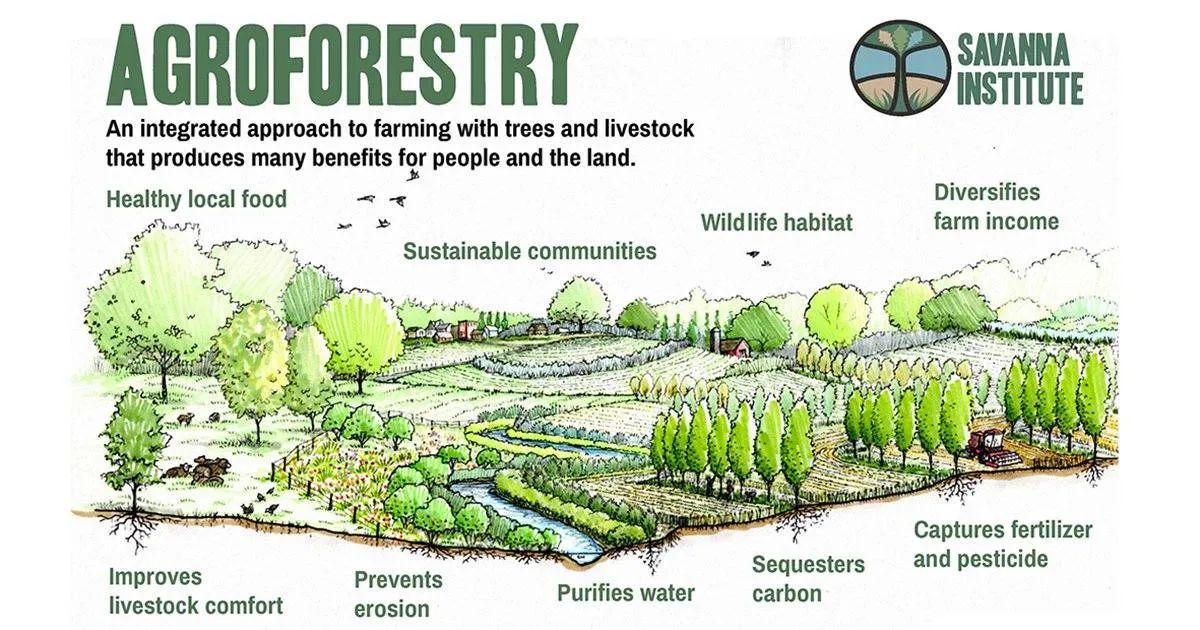
Farmers and landowners today are increasingly turning to agroforestry systems for their potential to provide multiple benefits such as diversification, ecosystem health, soil building, livestock health and added farm profitability and resilience. Conventional annual row cropping and tillage-based agriculture have resulted in the extensive damage and the loss of soil and water resources. Agroforestry systems can help stem and reverse these losses, returning viability to farms and adapting agriculture to the effects of climate change across the globe.
Getting Started
The following series outlines best practices for designing and planting your own commercial or residential agroforestry planting in the Northeast. The integration of trees into diverse crop and livestock systems is more common in warmer tropical and subtropical climates. In our region, the temperate climate and existing forest resources pose unique challenges and opportunities. While agroforestry systems have been in practice for hundreds of thousands of years by indigenous land stewards around the world, many of the principles are now becoming more accessible and attractive to a new generation of farmers concerned about agricultural sustainability and resilience.
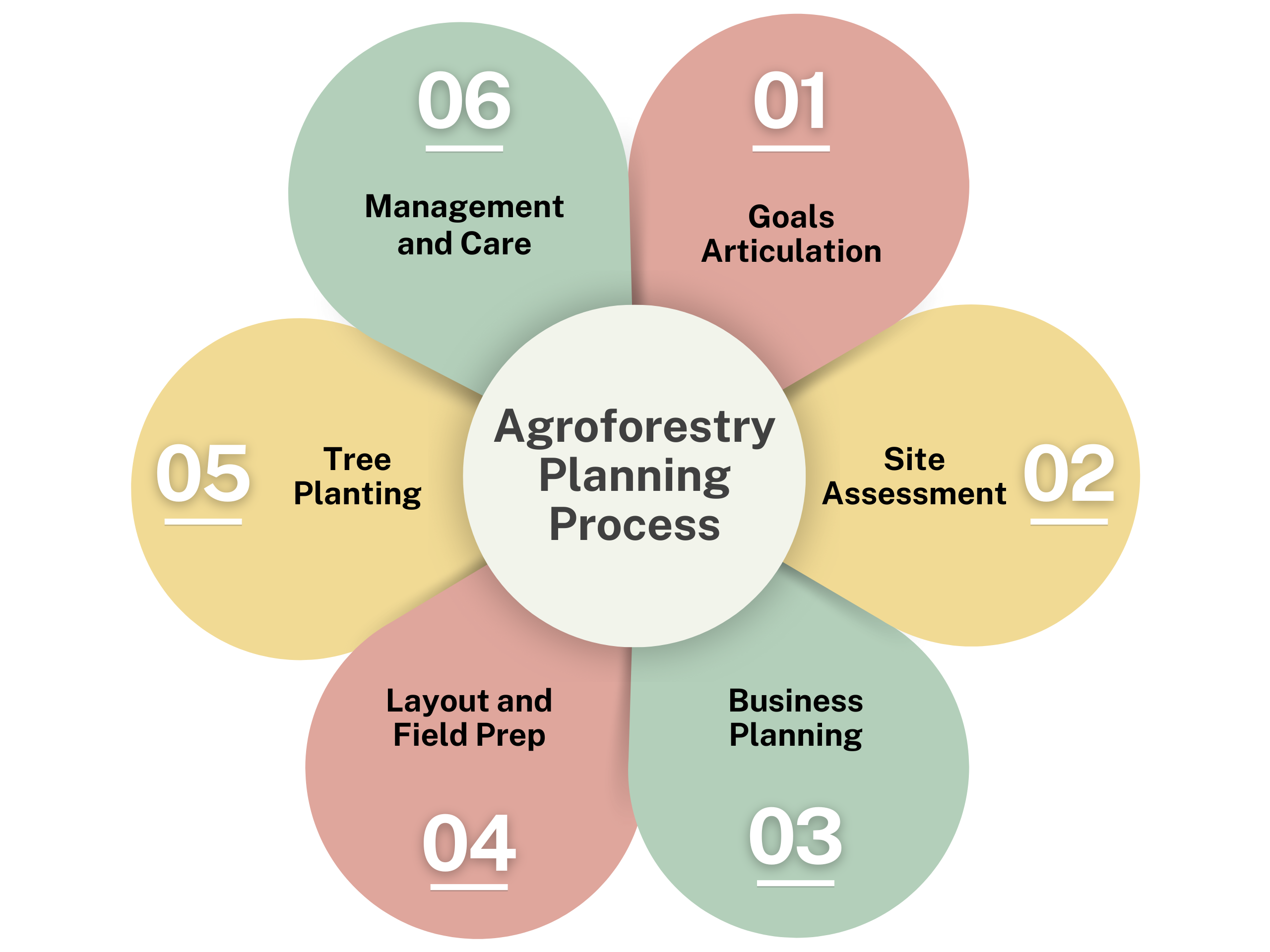
The topics covered in this series are:
- Introduction to Kickstart Agroforestry – You are here!
- Goals Articulation – What do you hope to accomplish with your agroforestry project?
- Site Assessment – What are the resources, opportunities, and constraints of the site?
- Crop + Livestock Selection – How do you decide what to produce?
- Business Planning – What are the best tools to manage farm finances?
- Site Design – Where do you put the trees?
- Layout + Field Prep – How do you prepare the site for planting?
- Tree Planting – What are the best practices for getting trees off to a good start?
- Soil + Water – What can you do to improve the water and soil on site?
- Management + Seasonal Care – How do you care for an agroforestry planting over time?
The information comes from RDG’s many years of experience assisting new and experienced growers in kickstarting their agroforestry projects. While agroforestry is an extremely diverse set of practices, this guide is best suited for projects producing perennial crops for human or livestock consumption. There are many other benefits to implementing agroforestry beyond production: enhanced biodiversity, improved soil health, increased water retention and infiltration, reduced erosion, decreased vulnerability to climate shocks, and overall happier humans and livestock!
Start planning your agroforestry project today! With some careful consideration and a few tips and tricks, you will be well on your way to agroforestry success (which you’ll reap in about 5-10 years). Below is a short collection of videos and engaging resources to further inspire you with real-world examples from agroforestry farms across the Northeast and Midwest:
- Farming with Trees – YouTube
- Agroforestry Webinar Library
- Savanna Institute – YouTube
- Mizzou Agroforestry – YouTube
- Forest Farming – YouTube
- Go Nuts Monthly Call & Agroforestry Resources – YouTube
- Cornell Agroforestry – Silvopasture – YouTube
- CISA Climate Change and Farming | Agroforestry and Silvopasture – YouTube
- Sustainable Agriculture Research and Education (SARE) Agroforestry Grants
- Agroforestry Photos and Videos | National Agroforestry Center
- Silvopasture | Virginia Cooperative Extension
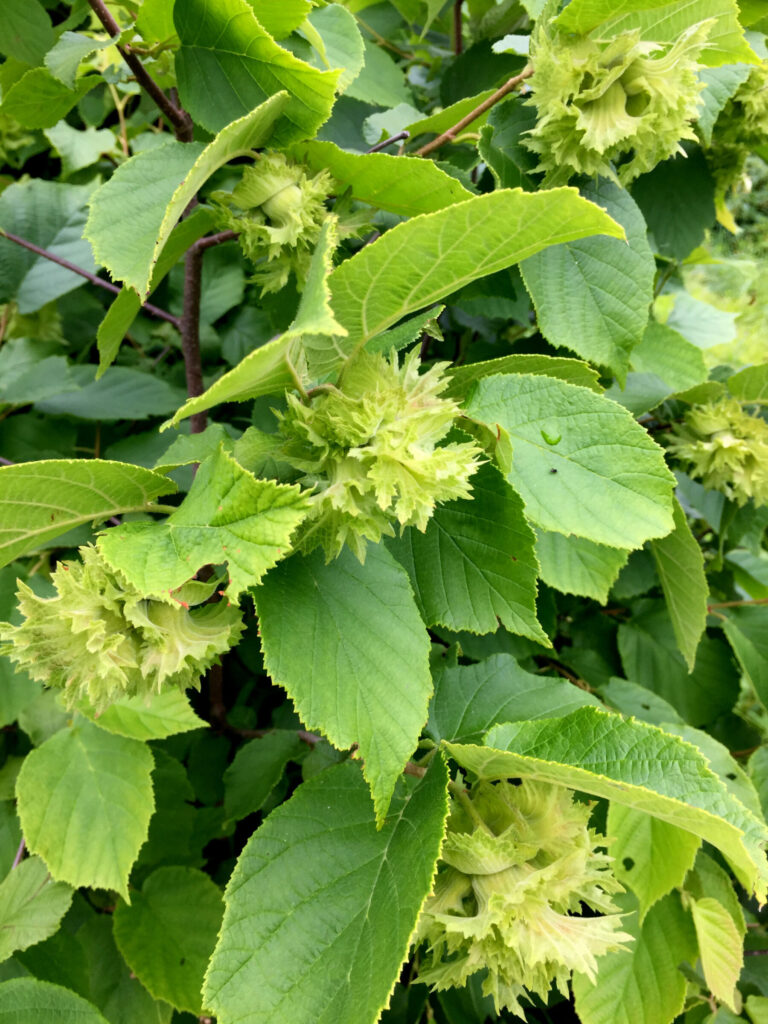
Finding Community
Agroforestry is based on traditional and indigenous land management systems that have been documented around the world for thousands of years. Fundamentally, they are more than just a way of managing land; they were integrated into a whole culture around food, seasonal activities, festivals, and intergenerational and interspecial relationships. In order for agroforestry to succeed, we must also rediscover the heritage and culture of perennial agriculture and support one another in our process. Trees are long-lived, and systems can take decades to reveal their strengths and weaknesses. Learning from each other at various stages of planning, implementation, and maturity is the best way to move the agroforestry movement forward.
Below is a growing list of agroforestry-related networks and coalitions in the Northeast and beyond:
- Agroforestry Coalition
- Catalyzing Agroforestry
- Farming with Trees – Farmer Collective
- New York Nut Growers Association
- New York Tree Crops Alliance
- Keystone Tree Crops Cooperative
- Agroforestry Coalition | Savannah Institute
- Agroforestry Demonstration Site Map
- Silvopasture Ning
- NOFA/Mass Go Nuts Agroforestry Calls
- Northeast Permaculture | Regional ListServs
- Northeast Nutheads (Google Group)
- Northeast Forest Farmers Coalition
- Vermont Agroforestry (Google Group)
- PA Agroforestry Peer Network (Google Group)

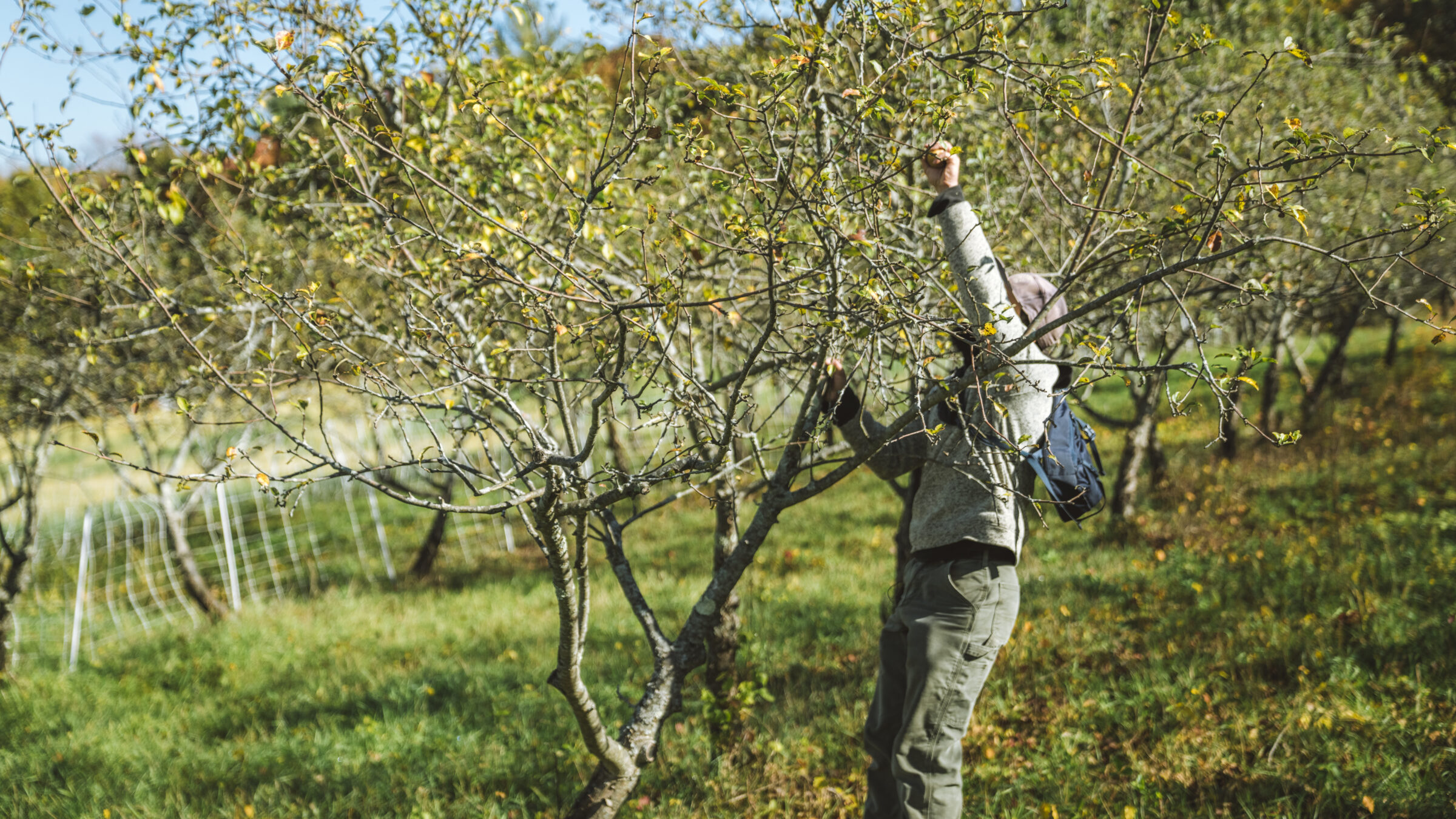
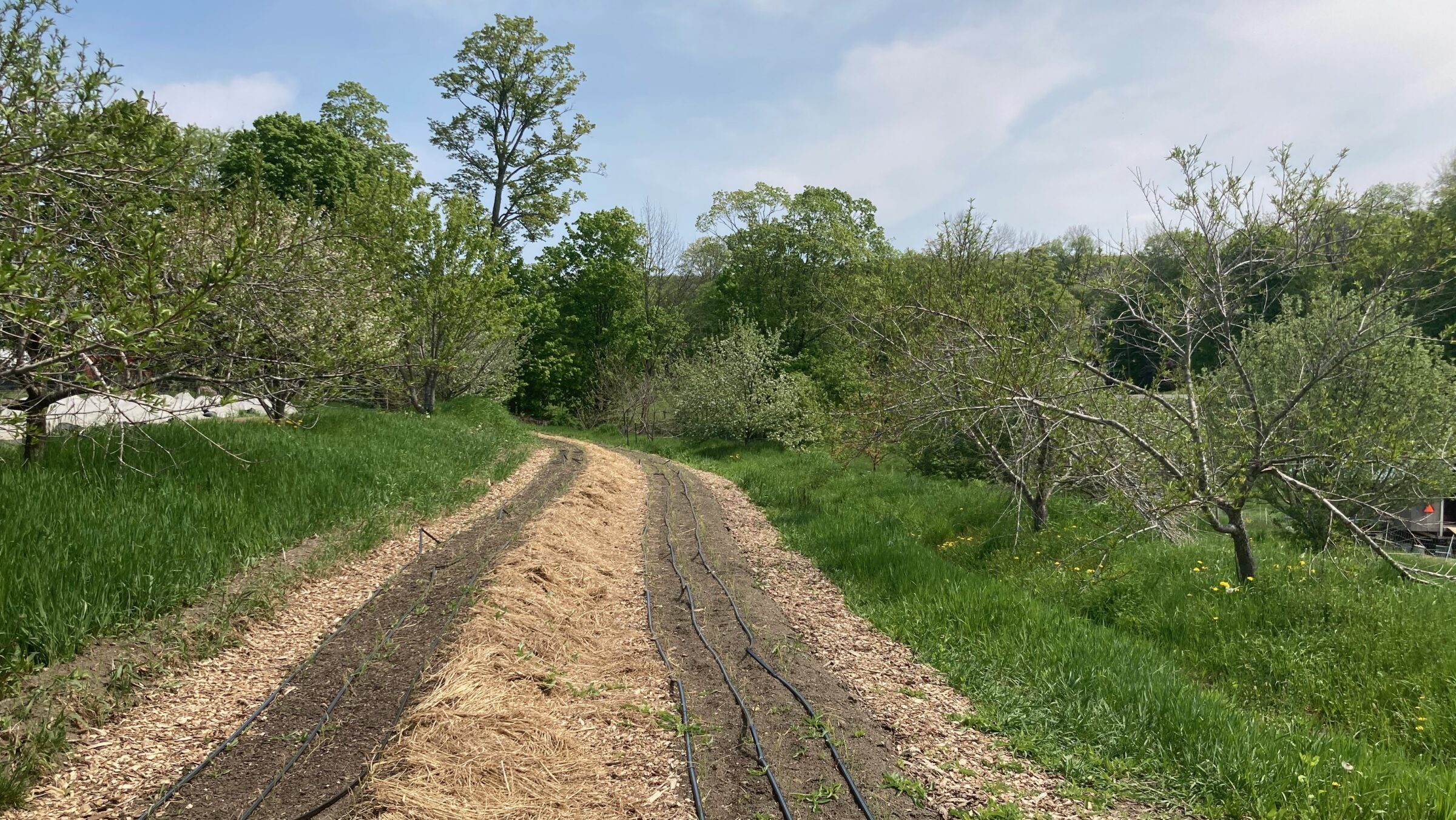
Comments (0)